Snowshoeing is the Perfect Polar Activity
June 27, 2019 - 5 minutes read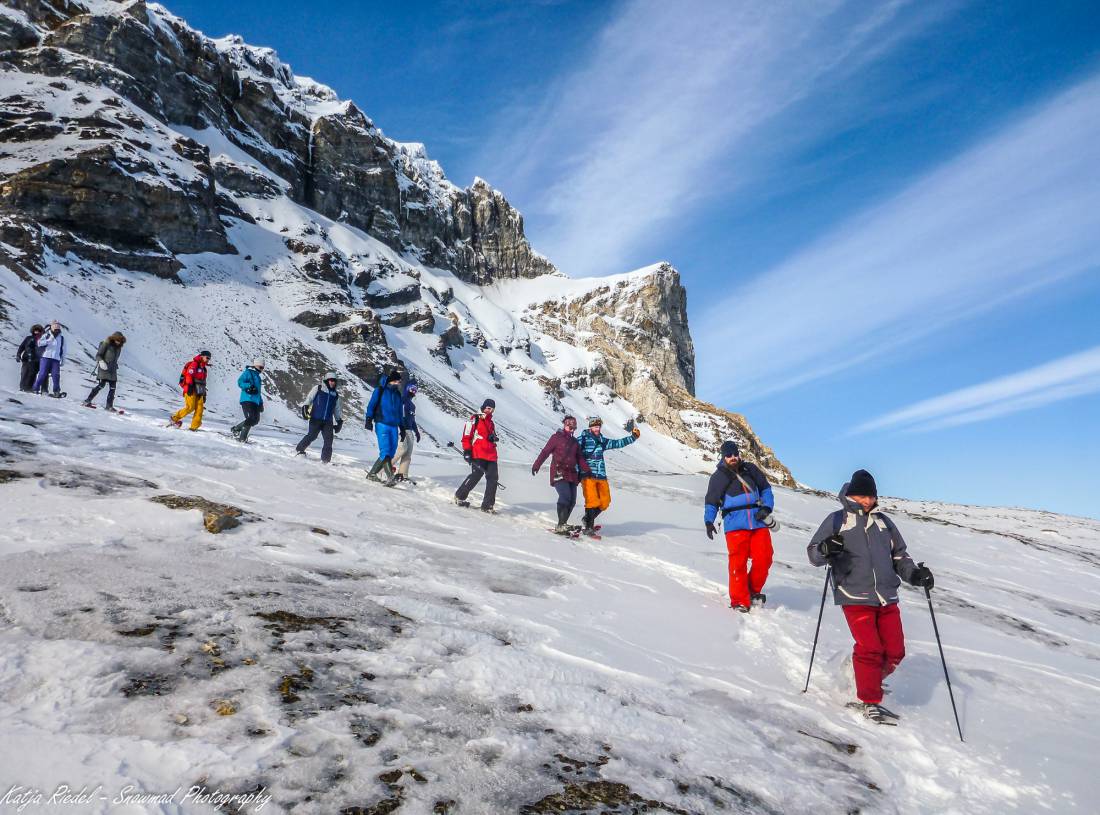 One of the most beloved polar sports is also one of the oldest. Snowshoeing has been the preferred means of foot travel in the Arctic since antiquity. And in the years since Antarctica was discovered, it’s been highly popular among researchers and polar tourists alike.
One of the most beloved polar sports is also one of the oldest. Snowshoeing has been the preferred means of foot travel in the Arctic since antiquity. And in the years since Antarctica was discovered, it’s been highly popular among researchers and polar tourists alike.
The reason is self-evident: Snowshoes are easy to use, light to carry, and make walking in snow far more feasible — and fun.
For those cruising the polar regions, snowshoes also represent a great way to see the outdoors while undertaking an invigorating aerobic workout. (So you can keep enjoying all of that delicious on-board cuisine entirely guilt-free.)
Here are five reasons why Oceanwide Expeditions recommends snowshoeing for Arctic or Antarctic cruises.
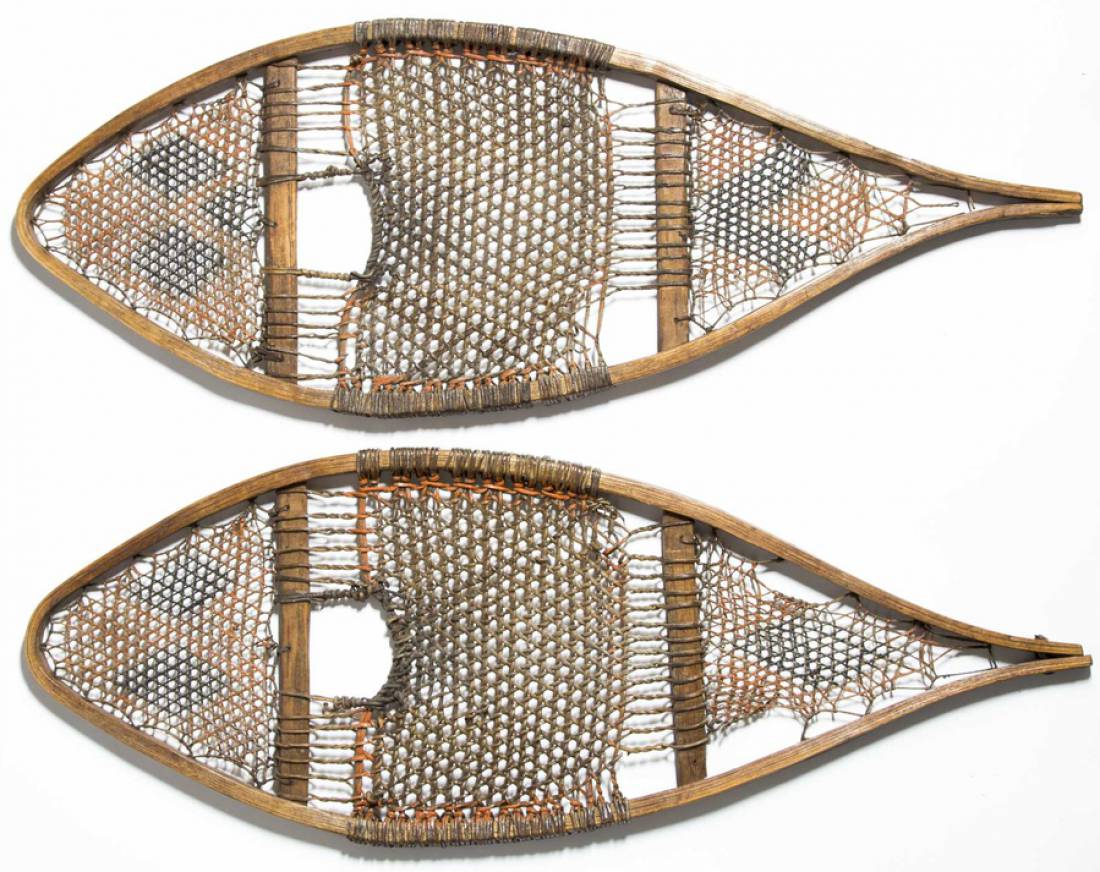 1. Snowshoeing has a long and rich tradition
1. Snowshoeing has a long and rich tradition
Snowshoes have been around for 4,000 to 6,000 years and were probably first used in central Asia. Essential for mobility over deep snow, snowshoes would have been common gear for trappers, traders, and anyone who lived in the far north.
Early snowshoes were fairly crude by today’s standards, typically composed of a hardwood frame covered with rawhide lacings. Even today, some avid snowshoers only use wood-framed equipment. This may be as much for practical purposes as for aesthetics ,since wooden frames don’t freeze as easily and are quieter over the snow.
Modern snowshoes are usually made with aluminum frames and composite polypropylene elements, which require little maintenance. They are lighter, stronger and therefor safer than wooden snowshoes.
These newer designs may also explain the sport’s enduring popularity. Even ski resorts offer snowshoeing trails for those who appreciate a slower-paced sport.
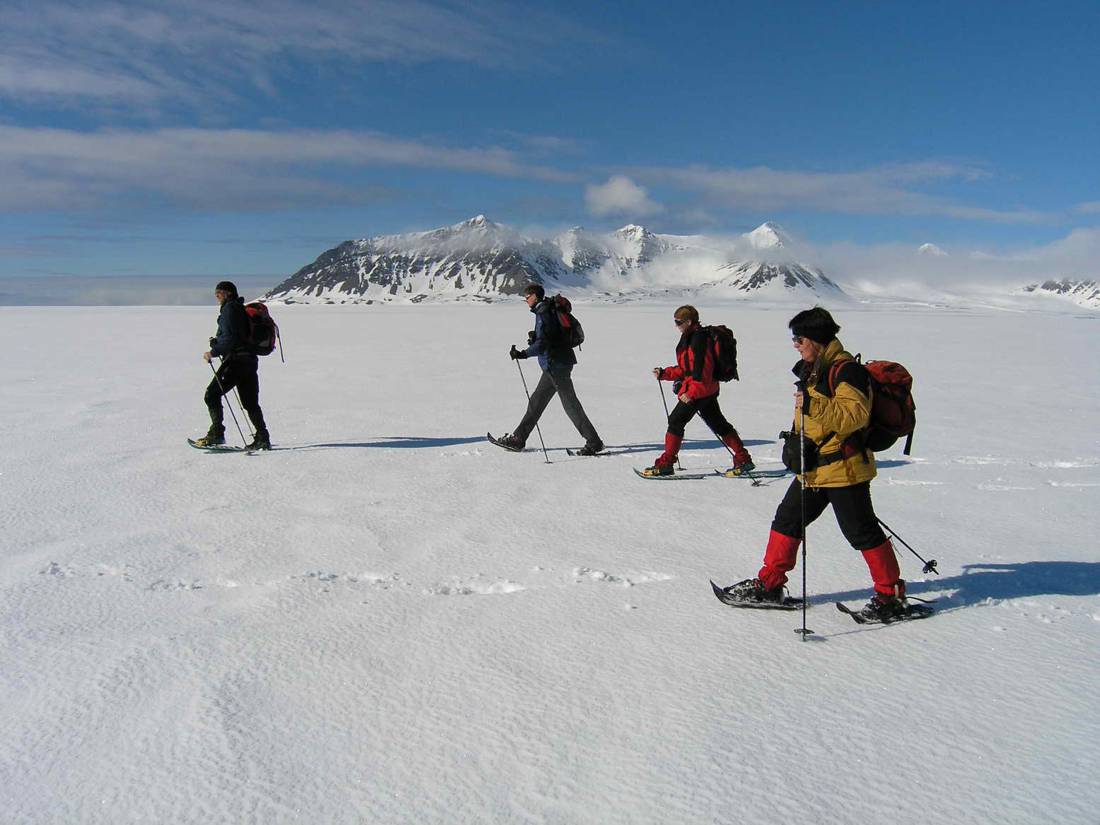 2. You get an amazing workout with snowshoeing
2. You get an amazing workout with snowshoeing
Snowshoeing is an excellent way to not only burn calories but also improve your cardiovascular fitness. In fact, it’s estimated that snowshoeing can expend about 45 percent more calories than walking or running at the same speed.
Snowshoeing is also a low-impact activity, so your joints won’t suffer during this great aerobic exercise.
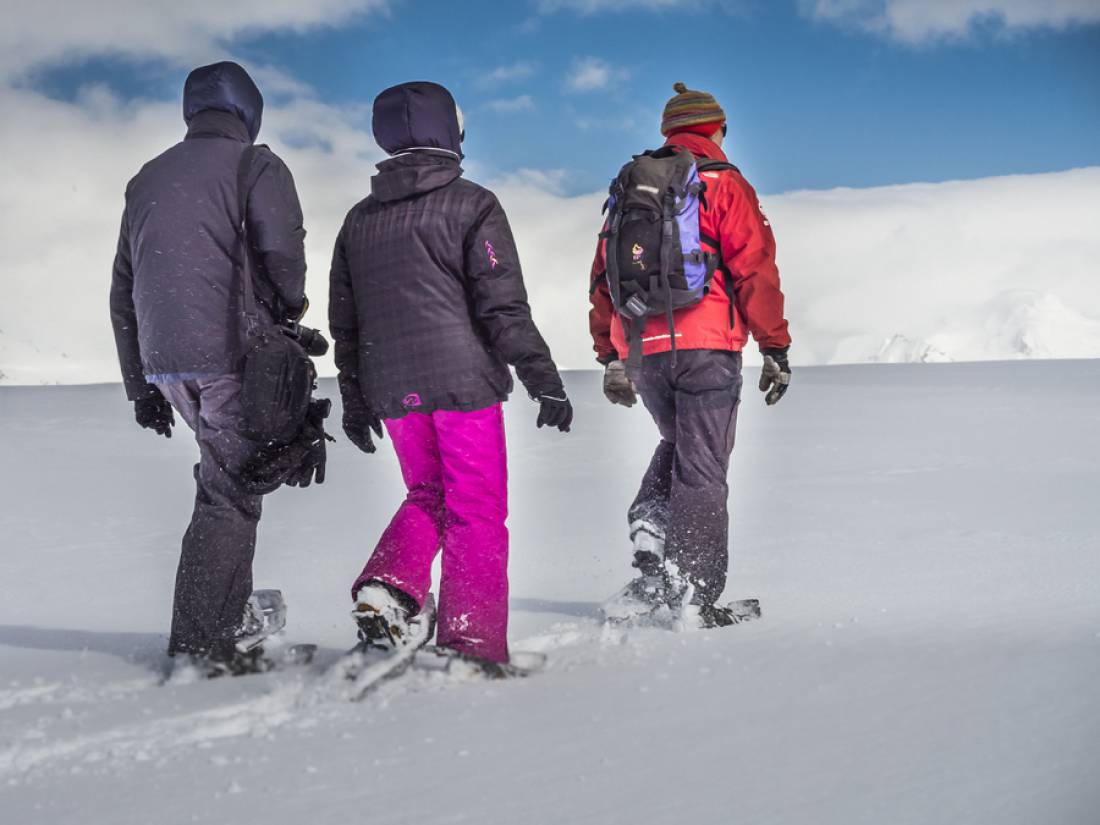 3. If you know how to walk, you know how to snowshoe
3. If you know how to walk, you know how to snowshoe
Sure, it’ll take a moment or two to get used to snowshoes if it’s your first time. But once the devices become familiar, snowshoeing really is just walking over the snow.
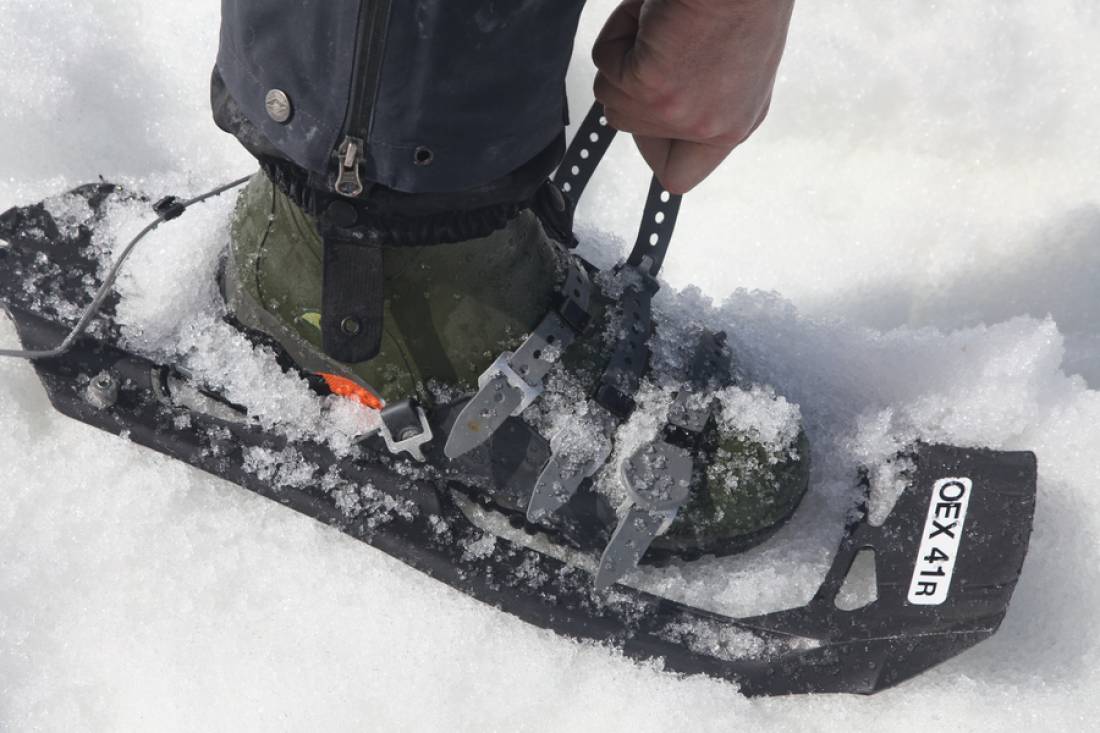 4. You can wear ordinary polar clothes for snowshoeing
4. You can wear ordinary polar clothes for snowshoeing
The same clothes you pack for an Antarctic or Arctic cruise work perfectly for snowshoeing.
In cold and wet climates, cotton garments aren’t a good choice, as they don’t insulate well and dry slowly when wet. We recommend dressing in layers so you can remove layers as you work up a sweat or add if you get colder.
For your base layer, use aynthetic or wool long underwear that insulates and dries quickly. Over the base layer, use a synthetic or wool insulating layer to retain body heat. Finally, use an outer layer to repel wind and water — a waterproof and breathable shell jacket is best.
Also, your head and neck lose an enormous amount of body heat if not insulated. Use a wool or synthetic hat or balaclava to stay warm. And always wear waterproof gloves or mittens.
Because UV rays can be unusually intense in snowy polar areas, don’t forget sunglasses and plenty of high-quality sunblock.
And then there’s your feet, maybe the most important area to protect. Use insulated, waterproof boots with thick soles (offered on Oceanwide Expeditions larger motorized ships). Wool or synthetic socks are best to keep your feet warm. You might also consider gaiters — strapping these over your boots will keep out the snow while snowshoeing.
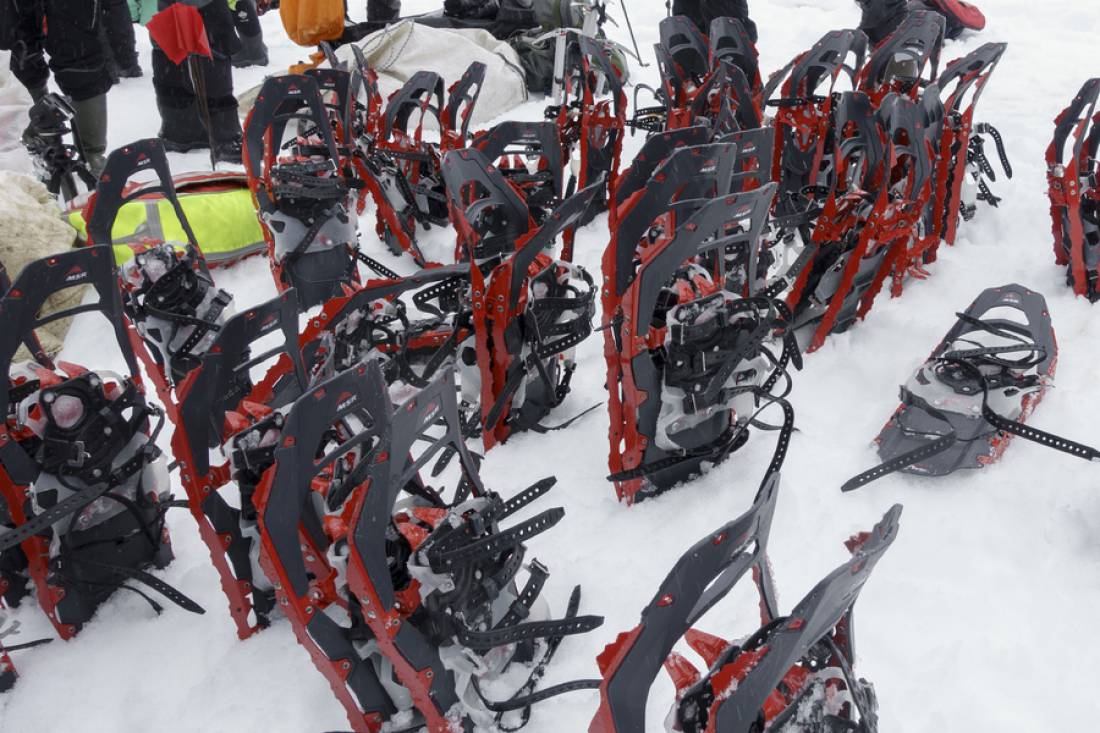 5. Snowshoeing is equally fun in the Arctic or Antarctica
5. Snowshoeing is equally fun in the Arctic or Antarctica
Whichever polar region you visit, snowshoeing is just as exciting, invigorating and enjoyable. For this reason, Oceanwide Expeditions offers a wide variety of snowshoeing trips in both Antarctica and the Arctic.
Every snowshoeing group is accompanied by an expedition guide with extensive experience in the sport. The general fitness level of the group is taken into account when deciding the exact route and duration of a trek. Outings are usually around three hours.
Tags: cruising the polar regions, low impact aerobics, polar regions, snowshoeing
0 Comments